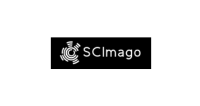CONTAGEM DE CÉLULAS SOMÁTICAS EM LEITE FORMAL DE PRODUTORES DE MARECHAL CÂNDIDO RONDON - PR
DOI:
https://doi.org/10.5380/avs.v11i3.7430Palavras-chave:
sanidade, produção, sazonalidade, higiene, bovino, beef cattle, health, production, seasonality, hygiene, bovineResumo
O objetivo deste trabalho foi avaliar as contagens de células somáticas (CCS) em leite cru segundo o período sazonal e o perfil produtivo de produtores da microrregião de Marechal Cândido
Rondon, PR. Foram utilizados os dados da produção diária de 1580 produtores no ano de 2004. Os perfis produtivos foram estabelecidos conforme os seguintes níveis: menos de 50; entre 50 e 100; entre 100 e 250; entre 250 e 400 e mais de 400 L.dia-1. Para as avaliações com as contagens celulares foram utilizados os resultados de 934 produtores que possuíam dados
completos de CCS dos 12 meses do ano, totalizando 11208 dados, os quais foram agrupados conforme os seguintes intervalos: menos que 0,4x106; de 0,4x106 a 0,75x106; de 0,75x106 a 1,0x106 e maiores de 1,0x106 CS.ml-1. Para a realização das análises estatísticas, os valores de CCS foram transformados em escore linear de células somáticas (ECS). Dos produtores amostrados, 7,9% não atenderam à regulamentação
atual para a CCS, pois apresentaram rebanhos com leite acima de 1,0x106 CS.ml-1. O aumento do perfil produtivo, em litros de leite formalizados por dia, implicou no aumento do percentual de rebanhos com contagens acima de 1,0x106 CS.ml-1. Para as condições climáticas do município, o leite apresentou CCS mais elevada no verão. Dos 1580 produtores avaliados, 65% apresentaram perfil produtivo menor que 100 litros de leite comercializados sob inspeção por dia.
Downloads
Como Citar
Edição
Seção
Licença
Autores que publicam nesta revista concordam com os seguintes termos:
- Autores mantém os direitos autorais e concedem à revista o direito de primeira publicação, com o trabalho simultaneamente licenciado sob a Creative Commons - Atribuição 4.0 Internacional que permite o compartilhamento do trabalho com reconhecimento da autoria e publicação inicial nesta revista.
- Autores têm autorização para assumir contratos adicionais separadamente, para distribuição não-exclusiva da versão do trabalho publicada nesta revista (ex.: publicar em repositório institucional ou como capítulo de livro), com reconhecimento de autoria e publicação inicial nesta revista.
- Autores têm permissão e são estimulados a publicar e distribuir seu trabalho online (ex.: em repositórios institucionais ou na sua página pessoal) a qualquer ponto antes ou durante o processo editorial, já que isso pode gerar alterações produtivas, bem como aumentar o impacto e a citação do trabalho publicado.













